2017 Activity Report
March Activity Report
1 April 2018
Global Japan Office Coordinator
Leonardo Brescia de Sousa Henriques
1. On 2nd April, three students who have just graduated from high school at Instituto de Aplicação Fernando Rodrigues da Silveira (CAp-UERJ) will fly to Japan to pursue a four-year undergraduate course at TUFS, after passing a selection done by representatives of the Japanese Department of UERJ, CAp-UERJ and GJO. Their names are Matheus Pacheco Lima, Laura Augusto Rosa and Gabriela Pacheco de Araújo.
All of them and several other students that are going to live in Japan were invited to participate in the reception organized by the General Consulate of Japan in Rio de Janeiro on 7th March. Besides the formal orientation given by the Consulate staff, the new exchange students could talk to the former exchange students, listen to their experiences and tips on daily life in Japan.
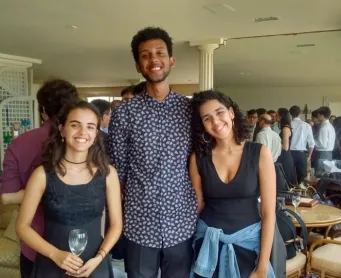
The Brazilian students selected to study at TUFS from April 2018 on: Laura Augusto Rosa (on the left), Matheus Pacheco Lima and Gabriela Pacheco de Araújo (on the right)
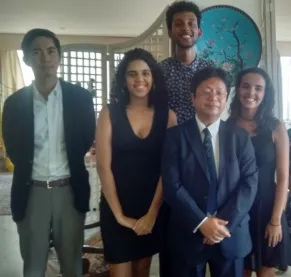
From left to right: Consul Eiji Takeya, Gabriela Pacheco de Araújo, Mateus Pacheco Lima, Consul Ken Kondo and Laura Augusto Rosa
2. This month we had the pleasure to welcome at GJO/UERJ the Japanese researcher Erika Miyashita Kelecom. Mrs. Kelecom came to UERJ for the first time in 2003, as one of the first exchange students after the signing a cooperation agreement between TUFS and UERJ in 2000. At the moment, she is enrolled in a post-graduate program at TUFS and is back to UERJ for three months to carry out surveys, aiming to develop her research.
On 12th March, she took part in the radio program of UERJ to share her experiences from 15 years ago when she was a student in Rio, her impressions about life at that time, how different it is nowadays and how the experience of living abroad can enrich someone’s life. The UERJ student Julie Yukari Misumi also participated in the program and related her life and experiences in Japan in 2015, when she studied at TUFS as an exchange student.
The program was produced and presented by Kleber Pereira and counted also on the participation of a representative of the International Cooperation Department, Prof. Marcia Christina Amorim, and the Brazilian student Mr. Lucas Amaya, who talked about his life in England where he is pursuing his Ph.D degree.
Prof. Amorim talked about the agreements between UERJ and other universities throughout the world, the opportunities for the foreign students that wish to study at UERJ and the opportunities for the Brazilian ones that intend to experience the academic life in a foreign country.
It was mentioned that some students are afraid to live for a while in a new country with different language and customs. The recommendation for those who are afraid is not to give up. All the participants strongly recommend them to overcome the fear and enjoy this outstanding experience, for it is really worthwhile.
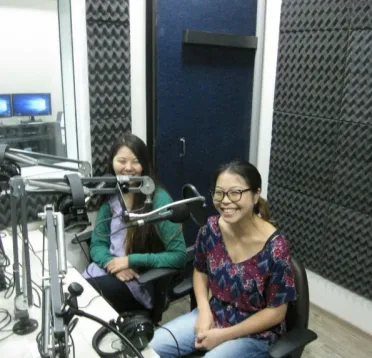
On the left, Julie Y. Misumi; on the right Erika M. Kelecom
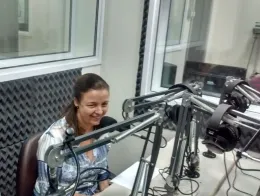
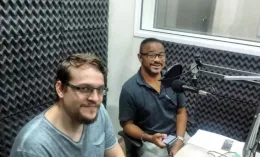
On the left Lucas Amaya; on the right Kleber Pereira (producer and presenter)
3. In the last week before holidays, on 20th March, Prof. Elisa Massae Sasaki, who teaches Japanese Culture at UERJ, along with Prof. Mari Fujiwara and GJO support provided an onigiri workshop for the students and for those who appreciate Japanese cuisine. The participants were taught how to prepare typical onigiri and after that, they had the opportunity to make them by themselves, using original ingredients. About 20 people were present.
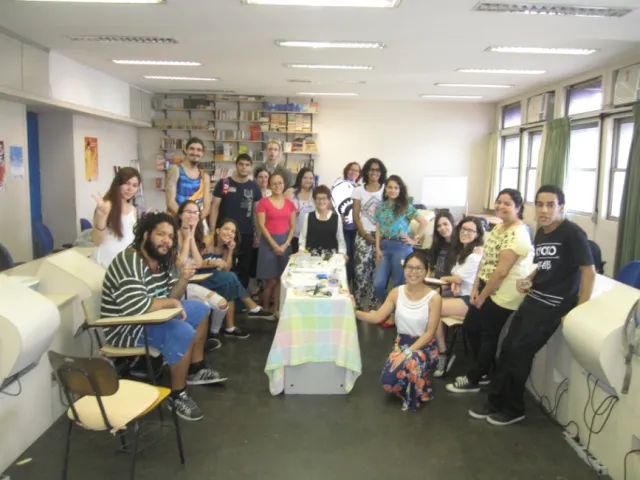
Some of the participants of the onigiri workshop. Prof. Mari Fujikawa (in the center, in black). On her left, Prof. Elisa Sasaki, in red.
February Activity Report
28 February 2018
Global Japan Office Coordinator
Rie Kibayashi
In Brazil we have a holiday during Carnival. The date of this holiday is not fixed, and since Carnival was in mid-February this year, we had a big break in the middle of this month. Because of this most activities at the GJO were held at the start and end of this month.
At the start of this month, there was an exam to pick who would be recommended for exchange to one of our partner institutions. The Japanese department students could apply for two programs at TUFS and Kanazawa University, and seven students were recommended. I hope they all get accepted to study in Japan.
At the end of the month, on Monday the 26th, I held the ‘Let’s Speak Japanese and Portuguese: Café Linguístico 5’. This time we played with the ‘Kanazawa Dialect Karuta’, gifted to us by a professor from Kanazawa University. The event was attended by Japanese people who don’t know Kanazawa dialect at all, so they had fun guessing the meanings of each word together with the Brazilian students.
This was my last month in Rio. As my final entry, I’d like to introduce the buildings of UERJ. I wonder what everyone imagines when they think of an overseas university? UERJ is in a big modern building next to the Maracanã Stadium, where the Olympic/Paralympic opening and closing ceremonies were held. It has both stairways and slopes, giving it a bit of a futuristic vibe. The walkways connecting the stairways and buildings are very open, and makes me feel like Rio is a very warm place. Because there is a lot of greenery, you can run into small monkeys and heron quite often.

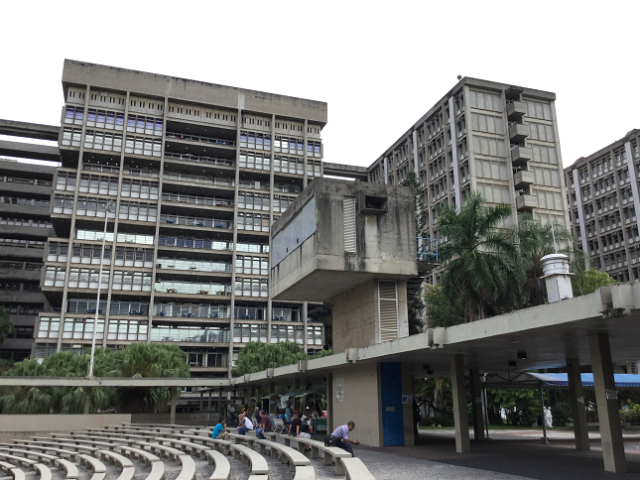
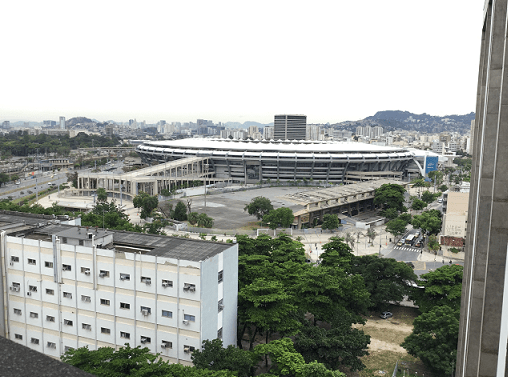
The secondary education Japanese classes, a very important part of the Rio De Janeiro GJO’s activities, will start again in March at the Federal Center for Technological Education of Rio de Janeiro (CEFET). I hope that the classes this year continue to be successful.
January Activity Report
4 February 2018
Global Japan Office Coordinator
Rie Kibayashi
The undergraduate program at UERJ has been on strike since October, so classes had stopped indefinitely, but they began again in January. The relaxed mood from New Year’s and pre-Carnival is gone, and the university is overflowing with energy.
On Monday the 22nd we held an information session on exchange programs to Japan. UERJ has exchange agreements with TUFS and Kanazawa University. There are many different programs, from those requiring Japanese skill to those which do not, and so the session was attended by not only students majoring in Japanese, but also students of other departments.
After the information session we held a New Year’s party. For the ‘Let’s speak in Japanese and Portuguese: Café Linguístico 4’, the students all played fukuwarai and bingo with the prefectures of Japan. Everyone was really good at fukuwarai, and no one tried to sabotage the game, so there weren’t any funny faces. It’s almost a shame everyone was so honest.
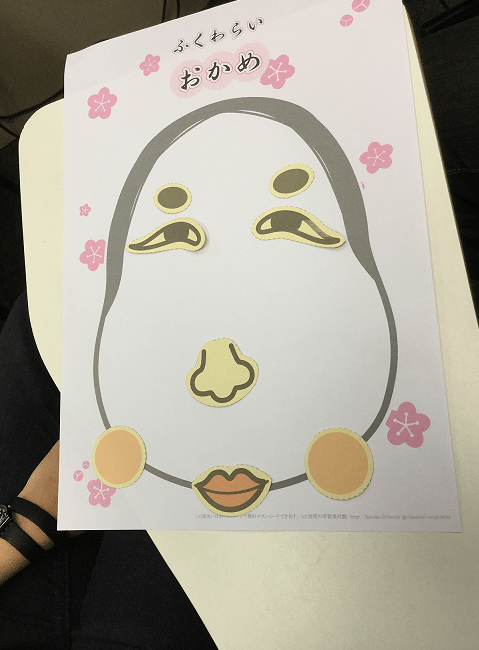
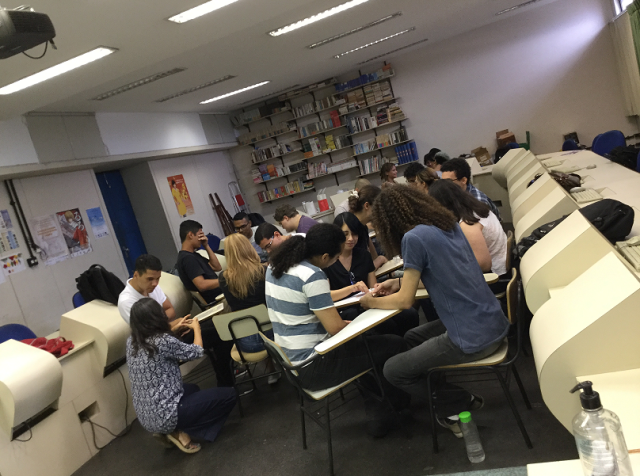
December Activity Report
December 2017
Global Japan Office Coordinator
Rie Kibayashi
It’s December, and all of Rio is in the Christmas mood.
On Thursday the 7th, the last lecture in the public relay lecture series ‘Japanese Culture Discovery’, which have been held since last May, was held at UERJ. This final lecture was taught by consul general Yoshitaka Hoshino to the title of ‘Comparing Brazil and Japan from a Diplomatic Perspective’, and attracted many guests from both inside and outside the university. Even in Brazil, the situation regarding North Korea and East Asia is shown on the news, and so many questions were asked after the lecture by students majoring in International Relations.
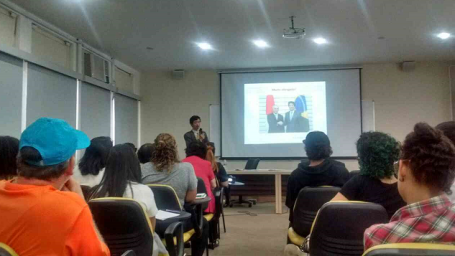
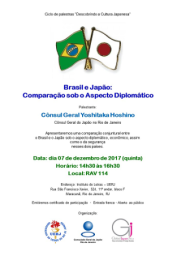
This year at UERJ, the GJO received many visitors. Starting with Professor Shin Abe (TUFS) who came to conduct research in March, the GJO received Professor Chika Takeda (TUFS) and Kinya Sugiyama (Kanazawa University) for an international academic conference in June, Professor Mayumi Usami (National Institute for Japanese Language and Linguistics) in July, and Professor Makiko Matsuda (Kanazawa University), Professor Yoshikazu Shiraishi (University of São Paulo), Professor Hiroshi Noyama (National Institute for Japanese Language and Linguistics), and Professor Yoshiko Calder (Princeton Community Japanese Language School, United States) in December. While they all visited for different reasons, we were able to assist all of the guests in living safely in Rio, and I was glad that we could further our academic relations. I hope that 2018 will be just as lively.
November Activity Report
November 2017
Global Japan Office Coordinator
Rie Kibayashi
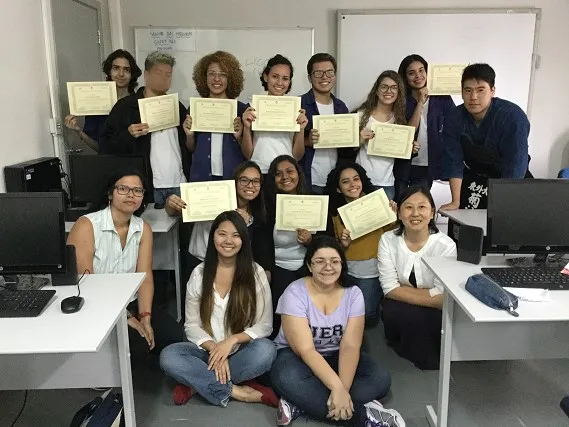
Following completion of a one-year program of classes at the Federal Center for Technological Education (CEFET), 19 students have received their certificate of completion. On the last day of the program, the students also gave short speeches and performed group skits. In the morning we had many guests such as consul general Yoshitaka Hoshino and vice-consul Takeya from the Consulate General of Japan, president Carlos Henrique Figueiredo Alves of the CEFET, and Ms. Angela Lopes Norte, who was in charge of this program. It was also a pleasure to have Professor Chika Takeda from TUFS see the performances.
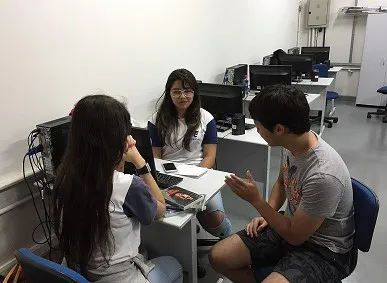
There are two things I felt strongly during this course. The first is that there ought to be a language class centered on simply enjoying a foreign language. In the course at CEFET, there were students who became good at Japanese, but on the other hand there were also students who had trouble memorizing Hiragana. However they continued to attend classes. There must be some reason they continued to attend class, or there must have been something that kept them interested. Observing such students made me feel that students should be able to simply enjoy using Japanese, even if they have difficulty memorizing grammar or vocabulary.
Additionally, in most cases there is only one teacher in one class, but I think it could be helpful to have multiple teachers in the classroom. We have conducted this course with help from students in the Japanese faculty of the state university, international students from Japan, and Japanese volunteers. Given this, it seems odd to have only one teacher to be in the classroom. Especially since language is indeed alive and fluid, I feel that teaching by myself would make me feel insecure.
On the 9th (Thursday) at university, we had a talk given by Principal Officer Ken Kondo of the Consulate General of Japan in Rio de Janeiro about “Japanese Music”. Mr. Kondo’s talk was on the characteristics of Japanese music, ranging from classics to current works. We watched many videos, and it was a fun time for all of us.
Also on the third week of November, we held a mock exam for all levels from N1 to N5 for whomever wished to take them. We had students focus not so much on how they fared on the questions, but rather on how they used the allotted time in the exam. There were many students taking the test for the first time, and it seems to have been a worthwhile experience for all. I am looking forward to hearing good results from everyone taking the real exam in December.
October Activity Report
October 2017
Global Japan Office Coordinator
Rie Kibayashi
This month, I want to write about two topics concerning secondary education Japanese classes, and about two events that happened at the university.
First, at the Federal Center for Technological Education of Rio de Janeiro (CEFET) classes, we decided to hold six presentations on Japanese culture by Japanese exchange students from October onwards. We collected the topics from the students, and are getting the presenters to talk about things such as ‘Japanese slang’ and ‘Japanese music’ in Portuguese. We hold these presentations every Tuesday, and it seems that the students really enjoy them, as some have even asked me on a Friday, ‘is there no presentation today?’
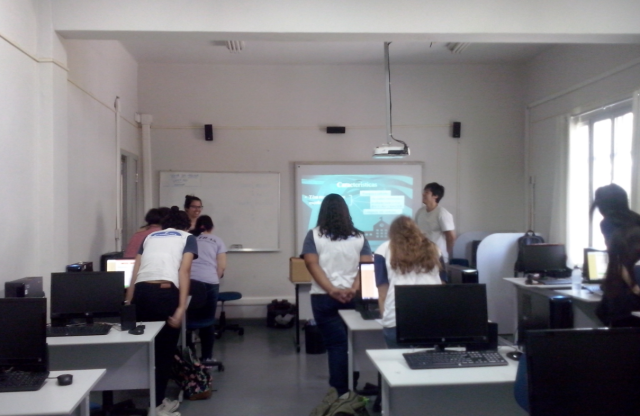
From the 26th (Thursday), I began the new Japanese classes. From April next year, there are three students from an affiliated school of Rio de Janeiro State University (CAp UERJ) that will study at TUFS, but they don’t really understand any Japanese yet. I consulted with a teacher from CAp UERJ, and we decided that the three students will study Japanese a little before coming to Japan. The class will be taught by Ana Cecilia, who was in charge of the Japanese course at CAp UERJ last year. Since the students will be going to Japan, they will be taught thoroughly, starting from hiragana and katakana.
Moving on to university events, this month’s public relay lecture was taught by the consulate-general of the Japanese Embassy in Brazil, Mr. Takeshi Kozawa, to the topic of ‘Japan’s Regional Police.’
The audience was very different to the usual one, with many police-affiliated people in attendance. Mr. Kozawa spoke while quizzing the audience, and it was easy to compare to Brazil’s situation. There were also many questions from the audience, making for a lively lecture.
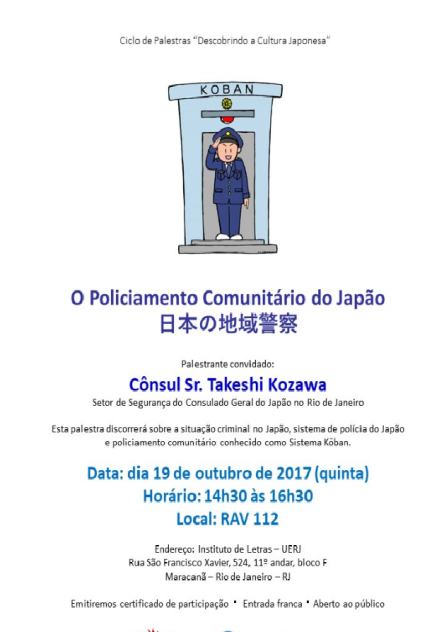
Finally, the biggest event this month was, believe it or not, a ‘takoyaki party.’ The party was attended by Brazilian students, Japanese students, and teachers, with over 40 people attending. The takoyaki made by the teachers from an authentic recipe, and the students’ handmade sweets were laid out together, and the party was very successful. I even got to meet some of the students I can’t meet very often, so I was happy.
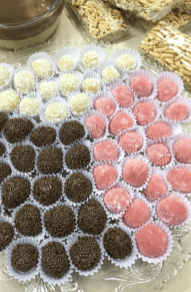
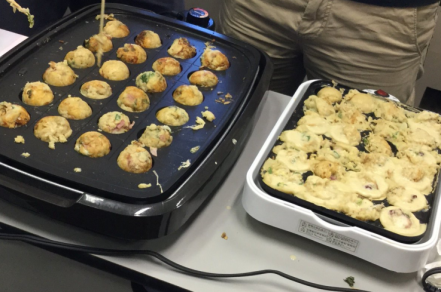
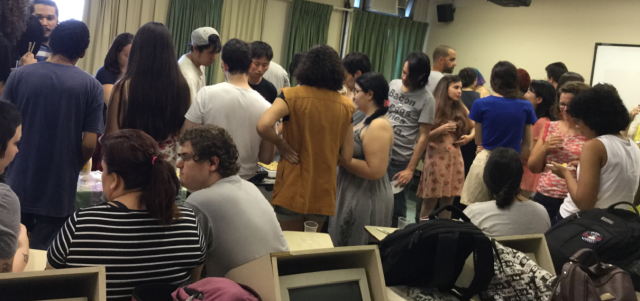
September Activity Report
September 2017
Global Japan Office Coordinator
Rie Kibayashi
This month we were successfully able to hold many activities.
1. Let’s speak in Japanese and Portuguese: Café Linguístico 2
On the 18th (Monday), we were able to successfully hold the second Café Linguístico. This time, around 7 Japanese students and 14 Brazilian students participated. Many of the Japanese students were participating in a UERJ event for the first time, and one student who came on exchange to UERJ seven years ago took time out of their summer vacation to participate, making the event brimming with variety.
2. Public Relay Lecture ‘Japanese Culture Discovery: Korekara no Kimono’
Once a month at UERJ, a ‘Japanese Culture Discovery’ public relay lecture is held by the Japanese Embassy in Rio de Janeiro and the Tokyo University of Foreign Studies Global Japan Office. September’s lecture was held by Aki Endo, a consul from the Japanese Embassy in Rio de Janeiro, and titled ‘korekara no kimono’ (kimono from now on). Ms. Endo spoke in Portuguese, and so the lecture went smoothly.
Considering the topic, I decided to have the Japanese department students dress in traditional Japanese yukata. Compared to Japanese people, Brazilian students are tall and have good style, so their way of wearing the clothing differed from the norm. For example, they don’t really make ohashori (tucked in) parts. I had heard about this before, but it was surprising seeing it in real life. Their yukata looked different from the ones I am used to seeing in Japan, but they still looked great, and everyone enjoyed themselves.
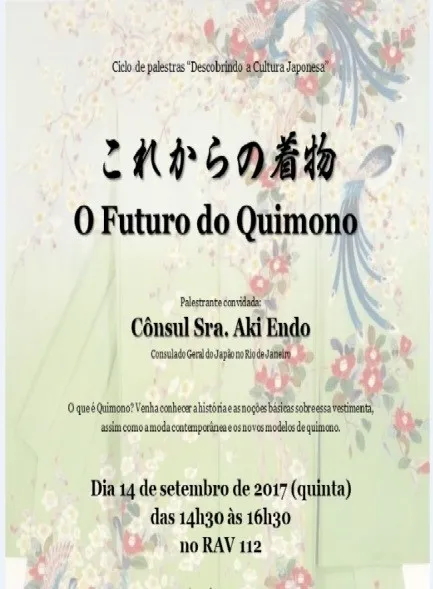
August Activity Report
August 2017
Global Japan Office Coordinator
Rie Kibayashi
In Brazil, schools begin their new terms in August. The high school Japanese course at the Federal Center for Technological Education of Rio de Janeiro (CEFET) began on Tuesday 8th, and classes at UERJ began on Monday 21st. This month, I want to write about two events.
1. Let’s speak in Japanese and Portuguese: Café Linguístico
On the Monday (14th) before classes began, an event called ‘let’s speak in Japanese and Portuguese: Café Linguístico’ was held at UERJ. If it’s exclusively a Japanese-speaking event, then beginner-level learners cannot really participate. On top of that, there are many TUFS exchange students and family members of staff that are studying Portuguese. Therefore we decided to make it an event for both languages. Four Japanese people and 15 Brazilian students participated, and everyone played games and had lively conversations in groups. It seemed to be a popular event, so we are thinking of holding it once a month.
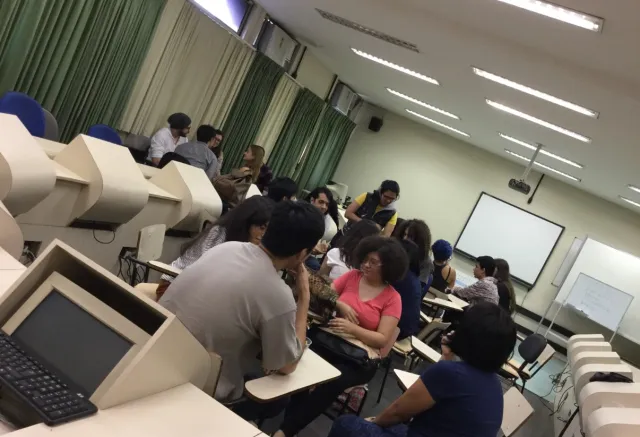
2. South American Japanese Education Symposium 2017
From Friday 25th until Sunday 27th, I participated in the ‘2017 South American Japanese Education Symposium’ in São Paulo. As well as Brazil, participants came from Argentina, Paraguay, Peru, and Bolivia. The symposium focused on Nikkei (Japanese-descent) society, and since I live in Rio where there are not many Nikkei, I was able to hear many stories I cannot at the university. Even though I’m in Brazil, it is a huge country, and this made me think that Rio is really only one small part of it.
July Activity Report
July 2017
Global Japan Office Coordinator
Rie Kibayashi
In July, the schools in Brazil are on winter break. The Japanese course at the Federal Center for Technological Education of Rio de Janeiro (CEFET) ended its first semester in June, and UERJ classes ended at the start of July.
Once a month at UERJ, a ‘Japanese Culture Discovery’ public relay lecture is held by the Japanese Embassy in Rio de Janeiro and the Tokyo University of Foreign Studies Global Japan Office. The speakers are staff from the consulate-general (on-site interpreters are available to translate Japanese presentations), with past topics including ‘Japanese Food’ (May), and ‘Japanese Exchange Opportunities’ (June). July’s topic was ‘Japan’s Mascot Characters.’ We informed CEFET students of the event, who in turn invited their friends, resulting in around 15 high school students coming to listen. I was very happy that the students came to the event and showed an interest in Japan.
I look forward to talking with the high school and university students about their winter break when the new semester begins.
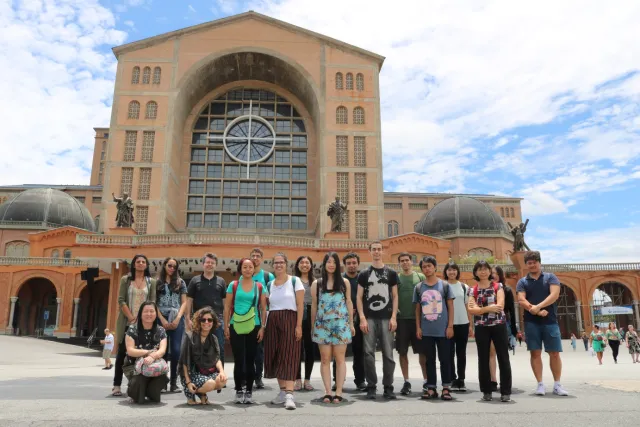
June Activity Report
June 2017
Global Japan Office Coordinator
Rie Kibayashi
There were two big events this June.
First, there was the classical literature department’s international conference held from Monday the 5th until Thursday the 8th here at Rio de Janeiro State University. The Japanese department received assistance from The Japan Foundation, and invited Professor Chika Takeda from TUFS, and Professor Kinya Sugiyama from Kanazawa University to speak at the conference. Both professors gave lectures on topics with deep connections to both Japan and Brazil, and with many students and teachers in attendance, the lectures were very successful.
There were also mini lectures on Japanese, and round table discussions on Japanese education at Rio State. All in all, there were presentations every day planned by the Japanese department, making the conference very substantial and productive for its attendees.
Tuesday 13th was the day of the end of semester presentations for the Japanese course at the Federal Center for Technological Education of Rio de Janeiro (CEFET). Students showed their accomplishments by giving short speeches, and performing skits in groups. Seeing the students use the knowledge they gained to write their speeches, and practicing hard to remember them, despite the class being an extracurricular activity, made me feel a great deal of admiration. For the group presentation, there were also groups who came up with and wrote their own scripts as opposed to following the ones in the teaching materials. Even though the students are still in the earlier half of the beginner level, and don’t know much vocabulary, I was surprised by their creativity.
July is the winter break, and classes resume again early August.
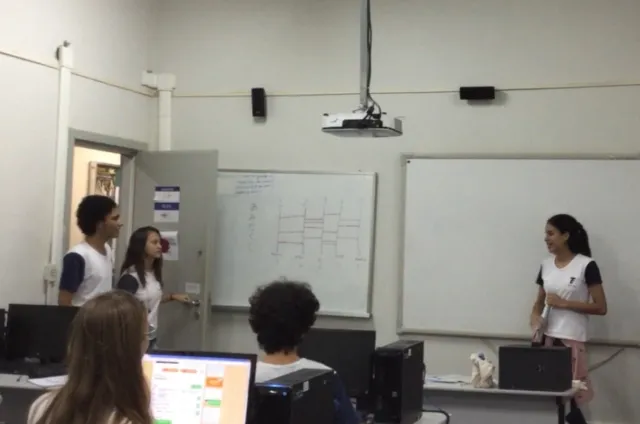
May Activity Report
May 2017
Global Japan Office Coordinator
Rie Kibayashi
The only public holiday in May is ‘May Day’ on the 1st, and since there was not even one short strike, we were able to carry out activities in full.
The students in the secondary school level Japanese language course at El Centro Federal de Educação Tecnológica Celso Suckow da Fonseca (CEFET) are gradually becoming familiar with Japanese. They even seem to understand explanations in Japanese, and nod while saying “un, un (yes, yes)”.
This month in one of the lessons at CEFET, the UERJ students showed me a funny video. We have the students submit a report of each lesson observation, and in one of them a student wrote “I think that if we showed the pupils music and cartoons, they would more interested in Japanese”. So, after asking for their comments and recommendations, without delay they made preparations so that we could use them in the lesson. The video they showed me was called ‘The Rururu Song’, and it used lots of dictionary-form verbs like ‘miru (see)’ and ‘taberu (eat)’. There were lots of words that would be difficult for beginners, but the students had prepared vocabulary cards, and so it seemed that the pupils had fun and were able to understand the meanings. I did not know of this song before, so I learned something too.
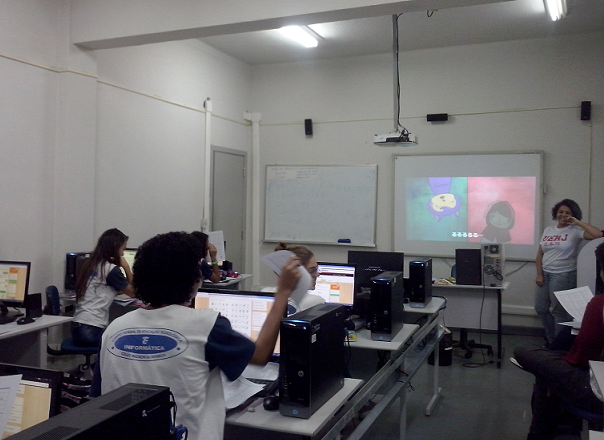
I think that people like the UERJ students who are working hard to learn Japanese are a good role model for the secondary school pupils. I am very glad to have people like them take part in the lessons and offer their ideas.
Also, in the afternoon classes at CEFET, Japanese people studying Portuguese take part by doing things like making sure that the pupils understand the Japanese explanations and translating the pupils’ questions. Japanese people living in Rio have also taken an interest in the lessons at UERJ, and have started to take part in those too.
I am blessed to be in an environment where so many different people collaborate, and I want to make the most of it while contributing our ideas together.
April Activity Report
April 2017
Global Japan Office Coordinator
Rie Kibayashi
The new term began at UERJ on Monday the 10th. It was postponed several times between January and now, so at first I was skeptical, but the literature department began lessons without any trouble. Since lessons have officially begun, I am also rescheduling the extracurricular language activities.
In the lessons at UERJ there is a teacher-training curriculum, and its students have to observe and help with lessons in their field of specialisation. These students will be coming to help out in lessons at the Federal Center for Technological Education of Rio de Janeiro (CEFET) high school course, as well as in university lessons. The number of students to one class is large, so if the university students can participate in the lessons and if the pupils follow them, it will be a huge help. Also, I’m glad that we were able to open a course that they can observe with the Japanese major students as well.
On Thursday the 27th, URFJ had an open day, and the students who were receiving scholarships gave poster presentations on the projects they were in responsible for. There was also a well-received presentation on the Japanese language course at UERJ’s affiliated school (CAp UERJ) given by Ana Cecilia, who is in charge. The new school term started at CAp UERJ later than at the university, so I hear that there isn’t enough time to hurriedly reopen the Japanese language course yet. I hope that they can begin lessons like last term soon.
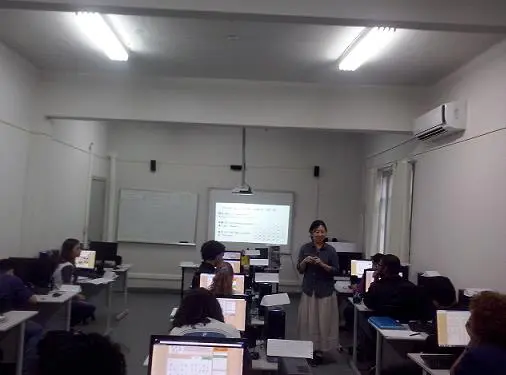
The lessons at CEFET use a multimedia classroom, so the pupils can study together using the ‘NHK World Easy Japanese’ online teaching materials, and they can each look at the separate passages they need to study individually.
